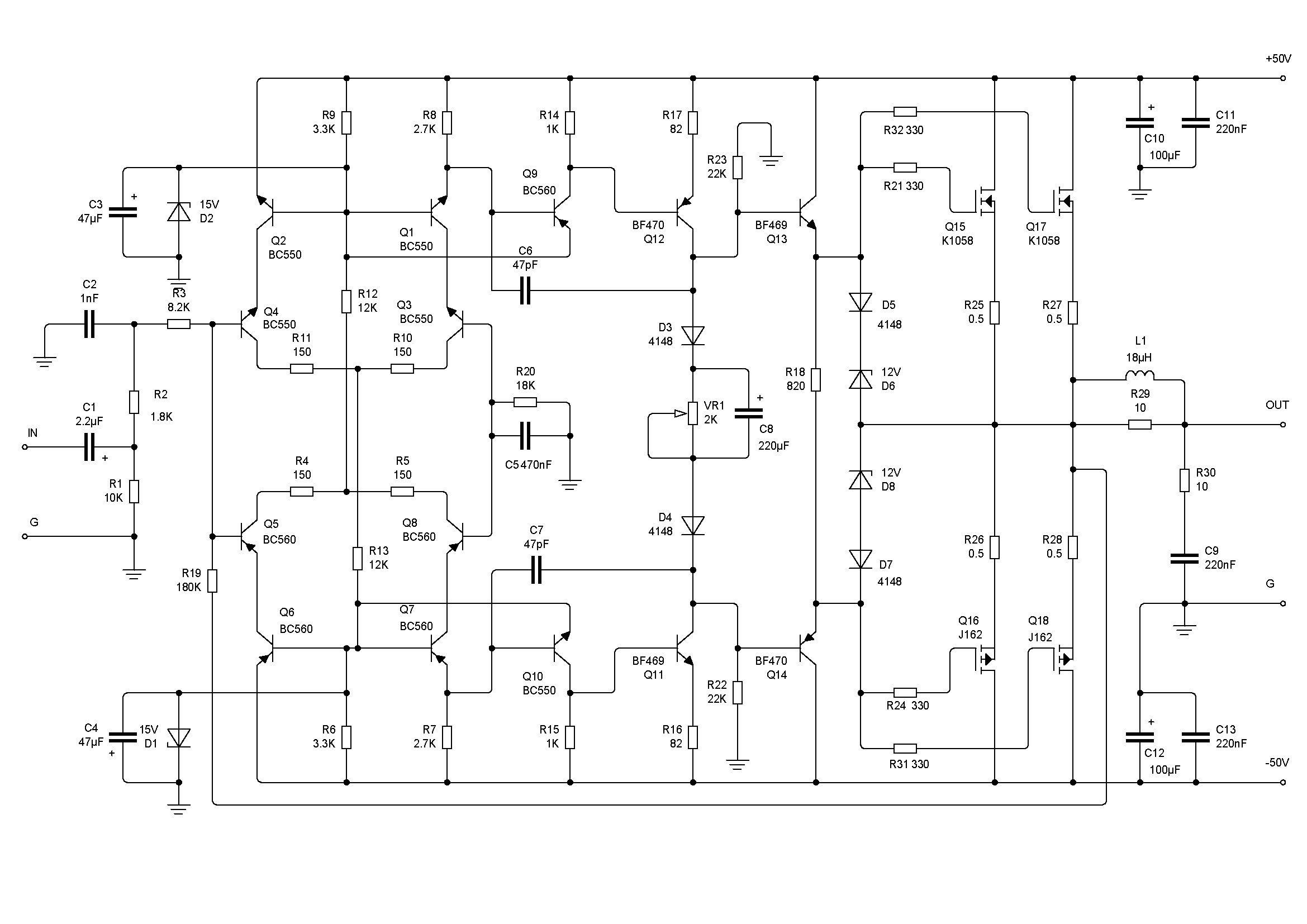
Crescendo ampilifier elektor1982

The Elector Crescendo was the first DIY amplifier that was not a kit. The design was sourced from the Elector magazines available at a local library.
The Elector Crescendo is an innovative audio amplifier designed for DIY enthusiasts. It features a robust circuit topology that enhances audio fidelity while maintaining user-friendly assembly instructions. The amplifier typically employs a Class AB configuration, which strikes a balance between efficiency and sound quality, making it suitable for various audio applications.
The schematic usually includes a power supply section that provides the necessary voltage and current to the output stage. This section may consist of a transformer, rectifier diodes, and filter capacitors to ensure a stable DC voltage. The input stage often includes a differential amplifier configuration, which improves the signal-to-noise ratio and minimizes distortion.
The output stage is critical for delivering power to the speakers and typically utilizes complementary push-pull transistors to amplify the audio signal effectively. The design may incorporate protection circuits to prevent damage from short circuits or overheating, ensuring longevity and reliability.
Feedback mechanisms are often integrated into the circuit to stabilize gain and improve linearity across the frequency spectrum. Additional features such as tone controls or volume adjustments may be included, allowing users to customize their listening experience.
Overall, the Elector Crescendo exemplifies a well-thought-out design that combines performance with the satisfaction of building an amplifier from scratch, making it a notable project for both novice and experienced electronics enthusiasts.The Elector Crescendo was my first DIY amp that wasn`t a kit. I borrowed the Elector magasins at our local library and had some `amateur` make the.. 🔗 External reference
The Elector Crescendo is an innovative audio amplifier designed for DIY enthusiasts. It features a robust circuit topology that enhances audio fidelity while maintaining user-friendly assembly instructions. The amplifier typically employs a Class AB configuration, which strikes a balance between efficiency and sound quality, making it suitable for various audio applications.
The schematic usually includes a power supply section that provides the necessary voltage and current to the output stage. This section may consist of a transformer, rectifier diodes, and filter capacitors to ensure a stable DC voltage. The input stage often includes a differential amplifier configuration, which improves the signal-to-noise ratio and minimizes distortion.
The output stage is critical for delivering power to the speakers and typically utilizes complementary push-pull transistors to amplify the audio signal effectively. The design may incorporate protection circuits to prevent damage from short circuits or overheating, ensuring longevity and reliability.
Feedback mechanisms are often integrated into the circuit to stabilize gain and improve linearity across the frequency spectrum. Additional features such as tone controls or volume adjustments may be included, allowing users to customize their listening experience.
Overall, the Elector Crescendo exemplifies a well-thought-out design that combines performance with the satisfaction of building an amplifier from scratch, making it a notable project for both novice and experienced electronics enthusiasts.The Elector Crescendo was my first DIY amp that wasn`t a kit. I borrowed the Elector magasins at our local library and had some `amateur` make the.. 🔗 External reference